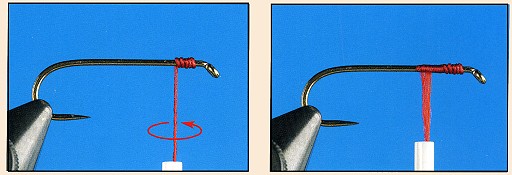
|
Why Flatten Thread?
By Ted Leeson and Jim Schollmeyer
|
 Left Photo: To flatten the thread, spin the bobbin tube counterclockwise (as viewed from above). We're using floss instead of thread in this picture for visibility, floss and flat tying thread...are similar in structure. Right Photo: As the bobbin spins, observe the tying thread where it meets the hook shank. As the twist is removed, this part of the thread will begin to spread. When it flattens to ribbon-like band, as shown here, the twist is removed. ~ Ted Leeson and Jim Schollmeyer Credits: The previous tip is an excerpt from The Benchside Introduction to Fly Tying by Ted Leeson and Jim Schollmeyer, published by Frank Amato Publications.
|